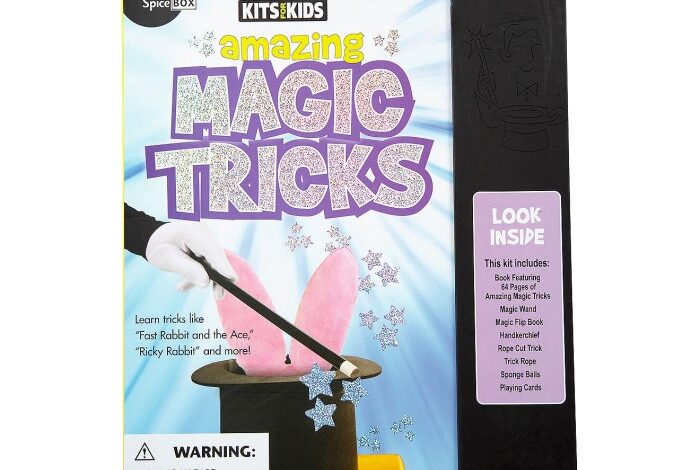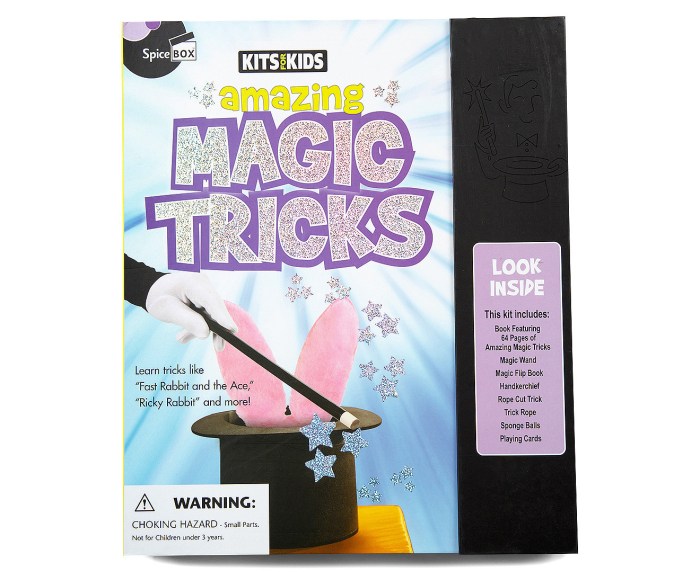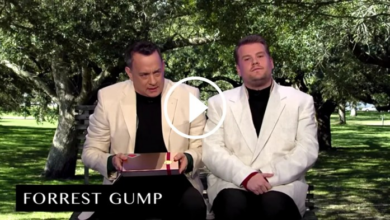
Great Magic Tricks: Unveiling the Secrets of Illusion
Great magic tricks have captivated audiences for centuries, leaving them wondering how the impossible becomes reality. From the ancient rituals of Egypt to the dazzling stage shows of today, the art of illusion has evolved alongside human curiosity and fascination.
Magic tricks are more than just entertainment; they are a testament to human ingenuity, creativity, and the power of perception. They exploit our natural tendencies, playing on our senses and expectations to create a world where the ordinary transforms into the extraordinary.
Types of Magic Tricks
Magic tricks, a captivating blend of illusion and skill, have fascinated audiences for centuries. The art of magic involves creating the illusion of the impossible, leaving viewers in awe and wonder. Understanding the different types of magic tricks and their underlying principles can enhance the appreciation of this captivating art form.
Categorization of Magic Tricks
Magic tricks can be broadly categorized based on the methods and principles they employ. These categories provide a framework for understanding the diverse techniques used by magicians.
Method-Based Categorization
Magic tricks are often classified based on the specific methods used to achieve the illusion. Some common categories include:
- Sleight of Hand: This category involves using skillful hand movements and manipulations to create illusions. Sleight of hand tricks often rely on misdirection, dexterity, and the use of props like cards, coins, and other small objects. Examples include card tricks, coin vanishes, and the classic “French Drop.”
- Mentalism: Mentalism tricks focus on the mind, often involving the illusion of reading thoughts, predicting the future, or influencing events. These tricks often rely on psychology, observation, and subtle techniques to create the illusion of supernatural abilities. Examples include mind-reading acts, predictions, and telepathy demonstrations.
- Stage Magic: Stage magic involves large-scale illusions and grand spectacles performed on a stage. These tricks often utilize elaborate props, special effects, and assistants to create breathtaking illusions. Examples include levitations, disappearances, and escape acts.
- Close-Up Magic: Close-up magic is performed in intimate settings, often with small groups of people. These tricks rely on close-up manipulation, misdirection, and the use of everyday objects to create illusions. Examples include card tricks, coin magic, and small object manipulations.
Great magic tricks can be a fun way to entertain a toddler, and you don’t need a lot of fancy props to pull them off. If you’re looking for inspiration for your little one’s room, check out this great article on toddler boy room on a budget 2 for some creative ideas.
Once you’ve got the room looking amazing, you can start practicing your magic tricks to impress your little magician!
Principle-Based Categorization
Magic tricks can also be categorized based on the underlying principles that drive their illusions. These principles provide a deeper understanding of how the tricks work:
- Misdirection: This principle involves diverting the audience’s attention away from the key element of the trick. Magicians use various techniques like verbal distractions, physical movements, and the use of props to create misdirection.
- Force: A force is a technique that subtly influences the audience’s choices, ensuring a specific outcome. Magicians use forced choices to create the illusion of control or prediction. Examples include forcing a specific card in a deck or influencing a participant’s decision.
- Substitution: Substitution involves replacing one object with another, creating the illusion of an impossible change or disappearance. Magicians use various methods to achieve substitution, including using duplicates, hidden compartments, and skillful hand movements.
- Mechanical Devices: Mechanical devices are used to create illusions that appear impossible. These devices often rely on hidden mechanisms, levers, and gears to produce unexpected results. Examples include vanishing cabinets, escape boxes, and levitation platforms.
Examples of Common Magic Tricks
Here are some examples of common magic tricks that illustrate the various categories and principles:
Card Tricks
Card tricks are a popular form of close-up magic, often involving sleight of hand, misdirection, and forced choices.
- The “Force”: This trick involves subtly influencing the audience to choose a specific card, creating the illusion of a prediction. The magician might ask a participant to choose a card, but through a series of subtle actions, they ensure the participant selects a predetermined card.
- The “Ambitious Card”: This trick involves a card seemingly traveling to the top of the deck despite being placed at the bottom. The magician uses sleight of hand and misdirection to make the card appear to magically move.
- The “Triumph”: This trick involves a seemingly impossible card reveal, where a selected card appears to rise to the top of the deck. The magician uses a combination of sleight of hand and misdirection to achieve this effect.
Coin Tricks
Coin tricks involve the manipulation of coins, often using sleight of hand and misdirection.
- The “Vanishing Coin”: This trick involves making a coin seemingly disappear from the magician’s hand. The magician uses a combination of sleight of hand and misdirection to make the coin vanish, often palming the coin or using a hidden compartment.
- The “Coin Through Glass”: This trick involves a coin seemingly passing through a glass without breaking it. The magician uses a combination of sleight of hand, misdirection, and a duplicate coin to achieve this effect.
- The “Coin Toss”: This trick involves a coin seemingly landing on heads or tails despite being flipped by the audience. The magician uses a combination of sleight of hand, misdirection, and a weighted coin to control the outcome of the toss.
Levitation
Levitation is a stage magic trick that involves the illusion of floating or rising in the air without any visible support.
- The “Ascension”: This trick involves a person seemingly rising into the air, often using a combination of hidden supports, mechanical devices, and misdirection. The magician might use a platform or harness concealed beneath the stage or employ a technique known as “the invisible thread” to support the levitating person.
- The “Floating Table”: This trick involves a table seemingly floating in the air, often using a combination of hidden supports, mechanical devices, and misdirection. The magician might use a platform or harness concealed beneath the stage or employ a technique known as “the invisible thread” to support the floating table.
Table of Magic Trick Categories and Techniques
| Category | Techniques | Examples ||—|—|—|| Sleight of Hand | Misdirection, Dexterity, Palming, Double-Lifting, False Transfers | Card Tricks, Coin Tricks, Small Object Manipulations || Mentalism | Psychology, Observation, Subtle Techniques, Force, Cold Reading | Mind-Reading, Predictions, Telepathy || Stage Magic | Elaborate Props, Special Effects, Assistants, Mechanical Devices | Levitations, Disappearances, Escape Acts || Close-Up Magic | Close-Up Manipulation, Misdirection, Everyday Objects | Card Tricks, Coin Magic, Small Object Manipulations |
The Psychology of Magic Tricks

Magic tricks are more than just sleight of hand and elaborate illusions; they are a fascinating blend of psychology and showmanship. Magicians skillfully manipulate our perception and exploit our cognitive biases to create a sense of wonder and disbelief.
This exploration delves into the psychological principles that underpin the effectiveness of magic tricks.
Misdirection and Attention Control
Magicians use misdirection as a key tool to control the audience’s attention. This involves drawing the audience’s focus away from the crucial moments of the trick, allowing the magician to perform the necessary manipulations unnoticed. The human brain can only focus on a limited amount of information at any given time, a concept known as “attentional blink.” Magicians capitalize on this by creating distractions, using verbal cues, or directing the audience’s gaze towards specific areas.
Great magic tricks are all about misdirection and creating a sense of wonder. It’s like a puzzle that the audience tries to solve, but the magician has already planned the solution. I love the way a simple prop, like a shutter message board , can be used to create a captivating illusion.
With a bit of creativity, you can use it to make objects disappear, reveal hidden messages, or even pull rabbits out of thin air! The possibilities are endless.
For example, a magician might ask the audience to focus on a specific object while secretly performing a sleight of hand with another object. The distraction creates a blind spot in the audience’s perception, allowing the magician to manipulate the objects without detection.
Perception and Illusion
Magicians exploit our perception to create illusions. Our brains constantly interpret sensory information to make sense of the world around us. Magicians use this to their advantage by manipulating visual cues, creating false perspectives, and playing with our expectations.
One classic example is the “levitation” trick, where a magician appears to float in mid-air. This illusion is achieved by using hidden supports, strategically placed mirrors, or even clever use of lighting to create the illusion of levitation. The audience’s perception is tricked into believing something that is not actually happening.
Suggestion and Expectation
Magicians use suggestion and expectation to influence the audience’s experience. The power of suggestion is immense, and magicians use it to create a sense of anticipation and belief. By making confident statements, creating a dramatic atmosphere, and building up the suspense, magicians can lead the audience to expect certain outcomes, making them more likely to accept the illusion.For instance, a magician might tell the audience that they are about to witness an impossible feat, which sets the stage for the illusion.
The audience’s expectations are primed, making them more receptive to the seemingly impossible.
Great magic tricks are all about misdirection, making the impossible seem possible. But the real magic in life isn’t about illusions, it’s about appreciating the simple things. What are you thankful for? what are you thankful for Taking a moment to reflect on these things can make even the most mundane day feel extraordinary, just like a well-executed magic trick.
The Role of the Audience’s Expectations and Biases
The audience’s expectations and biases play a crucial role in their experience of magic. We tend to see what we expect to see, and our biases can influence our perception of events. Magicians are aware of these tendencies and use them to their advantage.
For example, if a magician tells the audience that they are about to witness a mind-reading trick, the audience will be more likely to interpret any seemingly random events as evidence of mind-reading. This is because they are primed to expect this outcome.
The Art of Performing Magic Tricks: Great Magic Tricks
Performing magic tricks is more than just knowing the sleights of hand; it’s about creating an engaging experience for your audience. It’s about captivating them with wonder, leaving them in awe, and creating a memory that will last long after the final trick.
This art involves mastering not just the tricks themselves, but also the way you present them.
Key Elements of a Successful Magic Performance, Great magic tricks
A successful magic performance hinges on several crucial elements. These elements work together to create a compelling narrative that keeps the audience engaged and enthralled.
- Stage Presence: A captivating stage presence is crucial for any magician. It involves exuding confidence, maintaining eye contact with the audience, and using your body language effectively to draw them in.
- Storytelling: Every trick should be woven into a compelling narrative. By creating a story around the trick, you give it context, making it more memorable and engaging.
- Pacing: A well-paced performance is essential for keeping the audience engaged. Avoid rushing through tricks, and use pauses strategically to build suspense and anticipation.
- Audience Interaction: Involving the audience in your performance can significantly enhance their experience. Ask for volunteers, engage them in conversations, and make them feel like they’re part of the magic.
- Personality: Your personality is a key element of your performance. Whether you choose to be charming, mysterious, or humorous, let your personality shine through.
Tips for Improving Stage Presence and Audience Engagement
To further enhance your performance, here are some practical tips:
- Practice, Practice, Practice: Rehearse your routines until they become second nature. This will help you build confidence and ensure a smooth performance.
- Know Your Audience: Tailor your performance to your audience. Consider their age, interests, and expectations.
- Use Props Effectively: Props can enhance the visual appeal of your tricks. Choose props that are visually interesting and relevant to the story you’re telling.
- Be Prepared for Mishaps: Even the best magicians can make mistakes. Be prepared for mishaps and learn to handle them gracefully.
- Engage with Your Audience: Make eye contact, smile, and respond to their reactions. This will help you build a connection with them.
- Create a Memorable Finale: End your performance with a strong finale that leaves the audience wanting more.
Creating a Captivating Magic Routine
Crafting a captivating magic routine involves more than just stringing together a series of tricks. It’s about creating a cohesive experience that will leave a lasting impression on your audience. Here are some strategies:
- Choose a Theme: A theme can provide a unifying thread for your routine, making it more coherent and engaging.
- Vary the Tricks: Include a mix of different types of magic tricks to keep the audience entertained.
- Build Suspense: Use pacing and storytelling techniques to build suspense and anticipation.
- Use Visuals: Visual elements can add to the impact of your tricks. Use props, costumes, and lighting to create a visually appealing performance.
- End on a High Note: Conclude your routine with a powerful finale that leaves the audience in awe.
Famous Magic Tricks
Magic has captivated audiences for centuries, leaving them in awe and wonder. Some tricks have become legendary, etched in the annals of history, their secrets whispered among magicians and their impact felt across generations. These tricks, through their ingenuity, daring, and sheer brilliance, have shaped the art of magic and continue to inspire awe and wonder in audiences worldwide.
The Bullet Catch
The Bullet Catch is one of the most iconic and dangerous magic tricks. It involves a magician seemingly catching a bullet fired from a gun. The trick relies on misdirection and a variety of methods, some more dangerous than others.
One common method involves using a fake bullet and a pre-arranged “catch” with a hidden compartment. Another method, known as the “bullet-proof vest” method, involves the magician wearing a bulletproof vest under their clothing, allowing them to appear to catch the bullet.The Bullet Catch has been performed by countless magicians, including Harry Houdini, who famously performed it in 1911, showcasing his audacity and mastery of misdirection.
The trick’s history is intertwined with the evolution of magic, reflecting the ever-present tension between danger and illusion.
The Levitation of Harry Houdini
Houdini, known for his daring escapes and illusions, famously performed a levitation act that left audiences spellbound. The trick involved Houdini seemingly rising several feet into the air, suspended without any visible support. Houdini’s levitation was a masterful combination of stagecraft, misdirection, and the use of hidden mechanisms.
He employed a sturdy platform concealed beneath the stage, connected to a system of pulleys and wires. A skilled assistant would manipulate the system, raising Houdini slowly into the air while the audience’s attention was drawn elsewhere. Houdini’s charisma and showmanship amplified the illusion, leaving audiences convinced that they had witnessed the impossible.
The Cups and Balls
The Cups and Balls is a classic magic trick, dating back centuries, that continues to captivate audiences. It involves three cups and a small ball, with the magician performing a series of sleights of hand to make the ball seemingly appear, disappear, and multiply.
The trick relies on a combination of deft manipulation, misdirection, and a series of hidden compartments within the cups. The magician’s skill lies in their ability to distract the audience’s attention while seamlessly executing the necessary movements to make the ball vanish, reappear, and multiply.
The simplicity of the props and the seemingly impossible nature of the effects have made the Cups and Balls a staple of magic shows for centuries.
The Vanishing Elephant
The Vanishing Elephant, performed by the legendary magician, P.T. Barnum, in the late 19th century, was a spectacle of immense scale. It involved a live elephant seemingly disappearing from a large cage in front of a stunned audience. The secret behind the trick lay in a complex system of trapdoors and hidden compartments within the stage.
The elephant was not actually vanished; instead, it was lowered through a trapdoor into a hidden area beneath the stage. The illusion was enhanced by the use of curtains and smoke, further obscuring the elephant’s disappearance. The Vanishing Elephant was a testament to Barnum’s mastery of showmanship and spectacle, leaving audiences in awe of the impossible.
The “Sawing a Woman in Half” Illusion
The “Sawing a Woman in Half” illusion, a staple of magic shows since the early 20th century, has fascinated and terrified audiences alike. The trick involves a magician seemingly sawing a woman in half with a large saw. The secret behind the illusion lies in a combination of intricate stagecraft and a clever use of hidden compartments and illusions.
The woman is not actually sawed in half. Instead, she is positioned within a specially designed box, with a hidden compartment that allows her to be divided in a way that appears convincing. The magician’s skillful manipulation of the saw and the use of misdirection create the illusion that the woman is being sawed in half.





